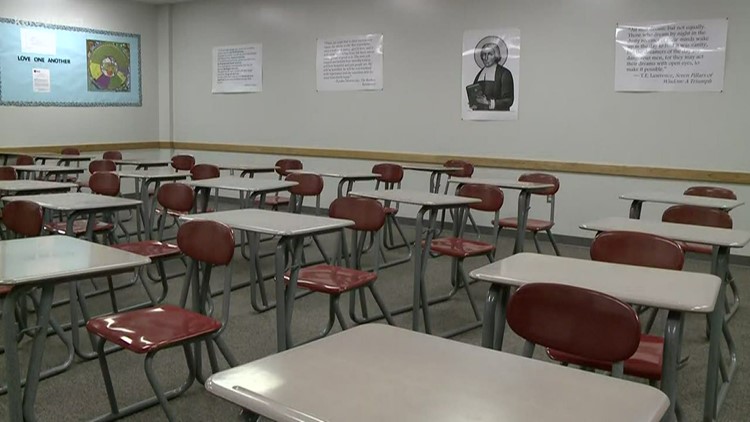The American Academy of Pediatrics, an organization representing 67,000 pediatricians, has come out in support of getting kids back in schools for the 2020-2021 year.
The organization released their own recommendations and guidance for schools working on fall plans while keeping COVID-19 and safety in mind.
In a statement posted online, the AAP wrote it "strongly advocates that all policy considerations for the coming school year should start with a goal of having students physically present in school."
The organization says that time away from school can create social isolation, making it hard for schools to identify issues children are experiencing, like physical or sexual abuse, substance abuse and depression. AAP also says there's a significant impact on food security and physical activity for children and families, in addition to the educational impact of keeping schools closed.
In addition to keeping staff and students 6 feet apart as much as possible, AAP also recommends staggering drop-offs and pickups, doing drop-off and pickup outside when weather permitting, keeping parents out of school buildings and installing physical barriers in spaces that can't accommodate physical distancing.
Some of the re-entry policies AAP recommends include:
- Encourage alternative modes of transportation for students who have other options besides bussing
- Assigned seating that keeps the same students near each other each day
- One-way hallways
- Separate lunch periods to minimize the number of students in cafeterias at one time
- Utilize outdoor spaces for meals
The AAP also breaks down their recommendations for schools based on age: Pre-K, Elementary Schools, Secondary Schools and Special Education. You can read the entire statement from AAP here.
In Minnesota, parents, teachers and students are still waiting to find out what the school year will look like come the fall.
The Minnesota Department of Education has released a guide for public schools to prepare for three potential options:
- In-person learning for all students: Schools are urged to create as much space between students and teachers as feasible throughout the day, but will not be held strictly to the 6-feet distancing guidance during "primary instructional time in the classroom." This scenario will be implemented if COVID-19 metrics continue to stabilize and/or improve.
- Hybrid learning with strict social distancing and capacity limits: This type of learning will combine face-to-face and distance schooling. Schools and transportation will need to be limited to 50% maximum capacity. Social distancing of at least 6-feet would be implemented at all times. If distancing can't be achieved, the number of occupants will need to be reduced. Schools will need to implement contactless pickup/delivery of school materials and food. This scenario would be implemented if COVID-19 metrics worsen at the local, regional, or statewide level. This scenario will also be implemented within a school if they experience clusters of cases.
- Distance learning only: Distance learning includes online, but also other methods to ensure that all students are able to receive their education. MDE said they expect all schools to provide students with needed educational materials. This scenario may be implemented if local, regional, or statewide COVID-19 metrics worsen significantly enough to require the suspension of in-person learning.
A final decision on school is expected by July 27.



